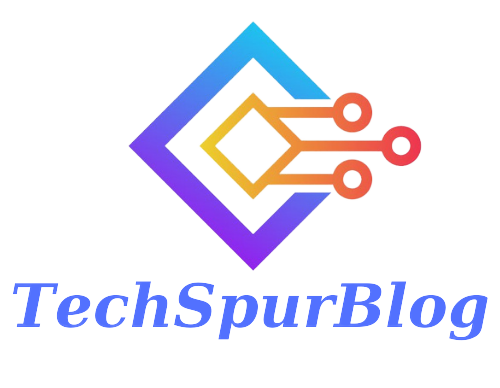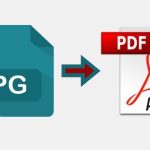In today’s digital era, the ability to seamlessly access essential systems and services is crucial for efficient workflow management. For certified nursing assistants (CNAs) using the Point of Care (POC) system, a smooth login process is paramount to ensure they can provide high-quality care to patients. This article aims to provide a comprehensive guide to the POC CNA login process, offering step-by-step instructions and useful tips to optimize user experience.
Understanding the POC System
The Point of Care (POC) system is a digital platform designed to streamline healthcare documentation, communication, and care coordination. It allows CNAs to record patient vitals, input observations, and document care activities efficiently. Understanding the importance of the Point click care system will help CNAs appreciate the significance of a hassle-free login process. It serves as a centralized hub that allows certified nursing assistants (CNAs) to efficiently record and access patient information, input observations, and document care activities.
The click point care CNA login system is typically web-based, accessible through a secure login process. Once CNAs log in, they gain access to a range of features and functionalities that facilitate their daily tasks. These may include:
Patient Vitals Tracking:
CNAs can record and track vital signs such as blood pressure, heart rate, temperature, and respiratory rate. This information is crucial for monitoring patient health and identifying any changes that may require immediate attention.
Care Documentation:
CNAs can document care activities, such as administering medication, assisting with personal hygiene, and providing wound care. This documentation ensures accurate and up-to-date records, which are essential for continuity of care and communication among healthcare providers.
Task Assignment and Communication:
The POC for CNA system allows CNAs to receive task assignments and communicate with other members of the healthcare team. They can view assigned tasks, update their progress, and communicate important information regarding patient care.
Care Plans and Assessments:
CNAs can access care plans and assessments for individual patients. These plans outline specific care goals and interventions, ensuring that CNAs deliver personalized and evidence-based care.
Reporting and Analytics:
The POC for CNA system often includes reporting and analytics capabilities, providing insights into patient trends, compliance with care protocols, and overall performance metrics. These reports assist in identifying areas for improvement and optimizing care delivery.
By utilizing the POC system, CNAs can streamline their workflow, reduce paperwork, and enhance communication among healthcare providers. The system promotes accuracy, efficiency, and collaboration, ultimately leading to improved patient outcomes.
Also Read: Smart Square HMH: Streamline Your Workforce Management Efforts
It is important for CNAs to familiarize themselves with the specific features and functionalities of the POC for CNA system used in their healthcare setting. They should undergo training and receive proper instructions on how to navigate the system effectively. Additionally, CNAs should adhere to data privacy and security protocols to ensure patient information remains confidential and protected.
The POC system is a vital tool for CNAs, enabling them to efficiently document patient care, communicate with the healthcare team, and access important information. Understanding the functionality of the POC system and its role in healthcare delivery is crucial for CNAs to provide high-quality and patient-centered care.
Step-by-Step Guide to POC CNA Login
Accessing the POC CNA Login Page
To begin the point of care CNA login process, open your preferred web browser and enter the URL provided by your healthcare facility or organization. Typically, it will be something like “https://poc-login.yourfacilityname.com” or a similar format. Press Enter to navigate to the login page.
Entering POC CNA Login Credentials
On the POC CNA login page, you will be prompted to enter your login credentials. These usually consist of a username and password. Enter your assigned username and password accurately in the respective fields. Be mindful of uppercase and lowercase letters, as login credentials are often case-sensitive.
POC CNA Login Password Recovery Options
If you encounter any difficulties logging in or have forgotten your password, most login pages provide password recovery options. Look for a “Forgot Password” or “Reset Password” link, usually located near the login form. Click on the link to initiate the password recovery process.
You may be asked to provide your registered email address or answer security questions to verify your identity. Follow the instructions provided on the password recovery page, and check your email inbox for further instructions on resetting your password. Create a new secure password, following any specified requirements, and proceed to log in with your updated credentials.
Also Read: Why Comcast Email Login is Essential: Benefits & Troubleshooting Tips
Troubleshooting POC CNA Login Issues
In case you experience any issues during the login process, such as encountering error messages or being unable to access the login page, consider the following troubleshooting steps:
Check your internet connection: Ensure that you have a stable internet connection. Try refreshing the page or restarting your internet router if needed.
Clear browser cache and cookies: Over time, accumulated cache and cookies can interfere with website functionality. Clear your browser’s cache and cookies by accessing the settings or preferences menu. Then, try logging in again.
Try a different browser: If you’re still unable to log in, attempt using a different web browser. Sometimes, browser compatibility issues can affect the login process.
Contact technical support: If all else fails, reach out to the technical support team provided by your healthcare facility or organization. They can assist you in resolving any technical issues and guide you through the login process.
Remember, it’s crucial to keep your login credentials secure and confidential. Avoid sharing your username and password with others and refrain from using easily guessable passwords.
By following these step-by-step instructions, you can navigate the POC CNA login process effectively and access the system to fulfill your responsibilities as a certified nursing assistant.
Also Read: What is Crowd1? How to Register and Login
Optimizing POC CNA Login Experience
Optimizing your point of care cna login experience can help streamline the process and ensure smooth access to the system. Here are some tips to enhance your login experience:
Remembering POC CNA Login Credentials Securely:
- Consider using a password manager tool to securely store your login credentials. This way, you can generate and save strong, unique passwords for each account without the need to remember them.
- If you prefer to remember passwords manually, avoid using easily guessable information like your birth date or pet’s name. Instead, create strong passwords by combining uppercase and lowercase letters, numbers, and special characters.
Utilizing Two-Factor Authentication (2FA):
- Enable two-factor authentication if it is available for the POC CNA login system. 2FA adds an extra layer of security by requiring a secondary verification method, such as a unique code sent to your mobile device or email.
- By implementing 2FA, even if someone obtains your login credentials, they won’t be able to access your account without the secondary verification.
Regularly Updating Passwords:
- Periodically change your login password to maintain account security. Set a reminder to update your password every few months or as recommended by your healthcare facility’s security policies.
- When updating your password, ensure the new one is strong and unique. Avoid reusing passwords across different platforms.
Clearing Browser Cache and Cookies:
- Clear your browser’s cache and cookies regularly to prevent any conflicts or issues with the POC CNA login page. Cached data can sometimes interfere with the login process.
- Refer to your browser’s settings or preferences menu to find the options for clearing cache and cookies.
Reporting, Technical Issues:
- If you encounter persistent login issues, promptly report them to the technical support team responsible for the POC CNA system. Provide specific details about the problem, including any error messages received, and any troubleshooting steps you have already attempted.
- Reporting issues allows the technical support team to identify and resolve any system-related problems, ensuring a smoother login experience for all users.
By implementing these optimization tips, you can enhance your POC CNA login experience, reduce potential issues, and ensure quick and secure access to the system. Remember, a seamless login process enables you to focus on providing quality care to your patients.
Also Read: GoFounders OnPassive Login – Register and Business Info
Benefits of a Smooth POC CNA Login
A smooth point of care cna login process offers several benefits that contribute to improved efficiency, productivity, and overall job satisfaction. Here are some key advantages of a seamless login experience:
Time and Energy Savings:
A smooth login process allows CNAs to quickly access the POC system, saving valuable time and energy. This means less time spent on struggling with login issues or waiting for the system to load, and more time available for providing direct patient care.
Improved Workflow Efficiency:
With a seamless login experience, CNAs can efficiently document patient information, record observations, and complete assigned tasks within the POC system. This streamlines workflow management, enhances care coordination, and promotes timely communication with the healthcare team.
Enhanced Patient Safety:
A smooth login process ensures that CNAs can access critical patient data promptly. This enables them to provide accurate and up-to-date care, make informed decisions, and respond quickly to changes in the patient’s condition. Improved access to patient information contributes to enhanced patient safety and quality of care.
Reduced Stress and Frustration:
Login issues can be frustrating and stressful, causing unnecessary delays and distractions. By minimizing or eliminating login-related problems, CNAs can focus their attention on patient care without the added stress of technical difficulties. This promotes a more positive work environment and better job satisfaction.
Increased Data Accuracy and Completeness:
A seamless login process encourages CNAs to consistently document care activities and patient observations within the POC system. This improves data accuracy and completeness, as CNAs are more likely to capture information in a timely manner when the login process is efficient.
Seamless Collaboration:
With a smooth login experience, CNAs can seamlessly communicate and collaborate with other healthcare providers using the POC system. They can easily access shared care plans, review updates, and provide real-time information, fostering effective teamwork and care coordination.
Enhanced Accountability and Compliance:
A streamlined login process ensures that CNAs can access the POC system with their unique credentials, promoting individual accountability for documentation and care activities. This supports compliance with organizational policies, regulatory requirements, and industry standards.
Access to Performance Metrics and Insights:
A smooth login process enables CNAs to access reporting and analytics features within the POC system. They can review performance metrics, track care outcomes, and identify areas for improvement. This data-driven approach empowers CNAs enhance their practice and contribute to positive patient outcomes.
In summary, a smooth POC CNA login process brings numerous benefits, including time and energy savings, improved workflow efficiency, enhanced patient safety, reduced stress, increased data accuracy, seamless collaboration, enhanced accountability, and access to performance metrics. By optimizing the login experience, CNAs can focus on their primary goal of providing quality care to patients, ultimately contributing to better healthcare delivery.
Also Read: Tallyman Axis: The Future of Data Management
Conclusion
Efficiently navigating the POC CNA login process is essential for certified nursing assistants to deliver quality healthcare effectively. By following the step-by-step guide and implementing the optimization tips outlined in this article, CNAs can streamline their click point care cna login experience, ensuring they can access the POC system quickly and efficiently. A smooth login process empowers CNAs to focus on their primary duty caring for patients—ultimately contributing to improved healthcare outcomes and enhanced job satisfaction.
With a seamless login experience, CNAs can save valuable time and energy, allowing them to dedicate more attention to providing personalized care to patients. They can efficiently document patient information, record observations, and complete assigned tasks within the POC system, leading to improved workflow efficiency and care coordination. Accessing critical patient data promptly enhances patient safety and enables informed decision-making.
Moreover, a smooth login process reduces stress and frustration for CNAs by minimizing technical difficulties and login issues. It promotes a positive work environment, allowing CNAs to focus on their essential responsibilities and achieve job satisfaction. Enhanced data accuracy, seamless collaboration, and access to performance metrics further contribute to improved healthcare delivery and individual accountability.
Optimizing the POC CNA login experience has a profound impact on workflow efficiency, patient care, and job satisfaction. By implementing the suggested steps and best practices, CNAs can enjoy the benefits of a streamlined login process and devote their time and expertise to delivering compassionate and high-quality healthcare.

Techspurblog is a blog dedicated to providing industry-leading insights, tips, tricks and tools on topics such as web design, app development, Digital Marketing, Education, Business and more. We also provide reviews of the latest tech products and services that can help you get the most out of your business.






